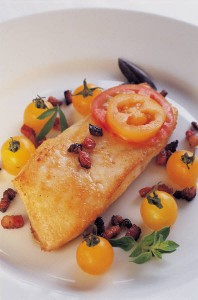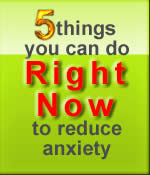Last post I shared the general idea of how I eat to balance my blood sugars and help anxiety.
My primary issue at first was insulin resistance. My blood sugars would be high (over 200) and drop as low as 39. As I have worked on healing the adrenal fatigue, now I only experience lows usually in the 50’s. If you’re curious about this, you can find more information about blood sugar levels on the American Diabetes Association’s website.
I did a post a while back on Adrenal Fatigue & Hypoglycemia where I explain how they are tied in together and what I did to recover. As my body got stronger through diet change and nutritional supplementation. However, figuring out how to eat was very challenging with a lot of trial and error. I’m sharing a few of my tips with the intention of sparing much frustration!
Jen Crippen’s 15 Tips:
- Eat every 2 to 3 hours. This helps maintain blood sugar levels. Often just grabbing a little snack like a handful of nuts, cream cheese and celery, or last nights leftovers will do the trick. Small frequent meals are better than a few large ones.
- When enjoying raw nut butters without salt added, I add about 1 tsp of Real Salt to a 16 oz. jar. The flavor will then dance on the taste buds!
- To help the adrenals first thing in the day, add a pinch of Real Salt to a glass of water or protein smoothie. The adrenals need salt which I’ve blogged about in the post Adrenal Fatigue & Low Salt Diets. If I have the almond butter as part of my breakfast.
- Carbohydrates (carbs) include sweet potato, potato, rice, quinoa, pasta, corn, bread, root vegetables, peas, hard squash, fruits, beans, chips, etc.
- Proteins include meats, poultry, eggs, seafood.
- Fats include butter, coconut oil, olive oil, cream, grapeseed oil, avocado oil, bacon grease, etc.
- Combo fat/proteins are cheese, avocados, and nuts.
- Non-starchy (non-carb) vegetables include spinach, lettuce, celery, chard, onions, peppers, asparagus, artichokes, Brussels’s sprouts, cabbage.
- At any meal, I never choose foods that have a higher carbohydrate rating than protein and/or fat. Unless, it’s fiber – it doesn’t impact the blood sugar levels. For example: if a meal has 15 grams of carbohydrates, the protein and/or fat must be total greater than that. Say, 10 grams of protein and 10 grams of fat. This is easiest to calculate in meals where nutritional content is on the labels.
- Another way to gauge carb to fats and protein is by volume. I never allow the size of the carb portion to be larger than any that of the meat or fat. I look at my plate and eyeball it. For example with 1/2 cup of ground beef and 1/2 cup of non-starchy vegetables I would not have more than a 1/2 cups worth of black rice. If I want more rice, I have to eat the same volume of meat and non-starchy veggies too!
- When I get the taste for something bubbly with a zing of taste, I will order sparkling water with a wedge of lime. This is great when I’m out to eat. It’s also handy when weaning off of soda!
- Coffee is one of my favorite things in the world, ever! When I had to cut it out of my diet, I mourned. To replace coffee I drink non-caffeinated tea, Teeccino, or Dandy Blend.
- With desserts, I typically have to make my own due to food allergies to dairy, wheat, corn, and soy. Quick balanced desserts are berries with yogurt, apples with almond butter, or gluten free cherry cobbler with whipped heavy cream. For baking, I recently blogged on Recipe Substitutions to make a recipe blood sugar and food allergy friendly.
- I make all of my meals from scratch because it is less expensive, tastes better, and then I know EXACTLY what’s in it. Prepared foods are full of sugars and common allergens.
- Always have snacks with you when you travel! In my car I keep some trail mix as well as a cup with protein powder that only water needs to be added. In my purse is an apple and nuts. When my blood sugar drops, I am not tempted to stop for fast food.
Hope these 15 tips help! My next post will be on what the glycemic index is. This helps me figure out how a sweet potato versus white rice affects my blood sugar. The most critical step to recovering my sanity was minding what I ate, this is why I’m sharing my secret food tips to help anxiety!










Much obliged for providing some reliable recommendations on this topic. I have found a good variety of good ideas about natural health and some not-so-good suggestions. Do you have any more honest suggestions or places on the Web that I can find more detailed recommendations? This would be much appreciated! So, continue the good work!
Lemuel,
I wish I could point you in the direction to find more information on this exact topic. The Blood Sugar Balance series I wrote at the beginning of 2010 was based solely on years of personal trial, error, and struggle to get my blood sugar balanced. I couldn’t find much information at all on it either. Most books/articles have been very vague and I found not very helpful. Most of what I have learned has come from personal experience (my #1 teacher) and researching OrthoMolecular and Functional Medicine. I also am finishing my Master’s in Nutrition, but that information has only confirmed what I had learned in years prior.
Be well,
Jen